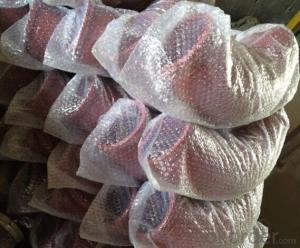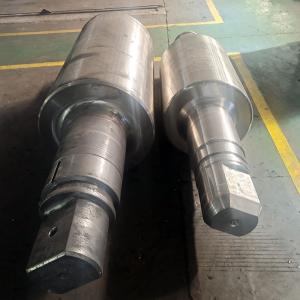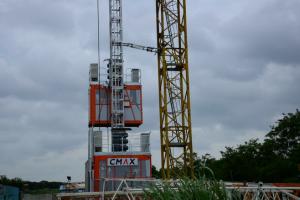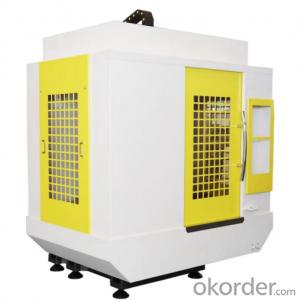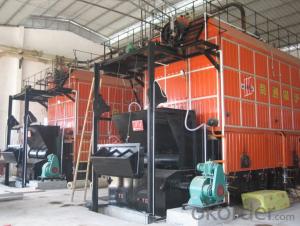CONCRETE DELIVERY ELBOW PM TYPE 45DEG R275 DN125
- Loading Port:
- Tianjin
- Payment Terms:
- TT OR LC
- Min Order Qty:
- 100 pc
- Supply Capability:
- 10000 pc/month
OKorder Service Pledge
OKorder Financial Service
You Might Also Like
concrete pump elbow table
Wear-resistant Single or Double Concrete Pump Elbow | |||||||
Type | Singe Elbow | Double Elbow | |||||
Model | DN125 | DN150 | DN175 | DN125 | |||
Material | Casting Steel ,ST52 | Inside | 40Cr | Outside | |||
Size | R275*90° | R275*90°+110 | 36° | F2000 | R275*90° | R275*90°+110 | |
R275*45° | R275*90°+211 | R400*30° | A3000 | R275*45° | R275*90°+211 | ||
R275*25° | R275*90°+411 | R400*45° | 471B | R275*25° | R275*90°+411 | ||
R275*20° | R275*90°+424 | R400*30° | 571B | R275*20° | R275*90°+424 | ||
R275*15° | R275*45°+170 | R488*90° | A1000 | R275*15° | R275*45°+170 | ||
R180*90° | R275*45°+310 | R500*90 | C1000 | R180*90° | R275*45°+310 | ||
R232*60° | R275*45°+310 | R280*90° | B2000 | R232*60° | R275*45°+310 | ||
R240*36° | 20°Lengthen | R240*36° | 20°Lengthen | ||||
R240*30° | 25°+740 | R240*30° | 25°+740 | ||||
R240*15° | 40°Zoomlion | R240*15° | 40°Zoomlion | ||||
R385*29° | R385*29° | ||||||
R315*33° | R315*33° | ||||||
Technic | Forged | ||||||
Average life | 25,000cubic | 50,000cubic | |||||
Appliciation | Used in concrete transport in construction work | ||||||
1.product profile:The double layer concrete pump elbow is developed by ourselves through new
technology and process.
2.characteristic:the inner layer of this concrete pump elbow undergoes heat treatment,and then the rigitiry can reach 62-65HRC.
3.characteristic:the outer layer of the concrete pump elbow possess good toughness properties
to protect the inner layer,so the security of the elbow is improved.
4.life:the experiment done abroad shows that the life of our concrete pump elbow can reach 35000-50000cbm,got the customers' praise
5.Beside the double layer concrete pump elbow,we produce all kinds of concrete pump parts,
straight pipe hose flange coupling and so on.
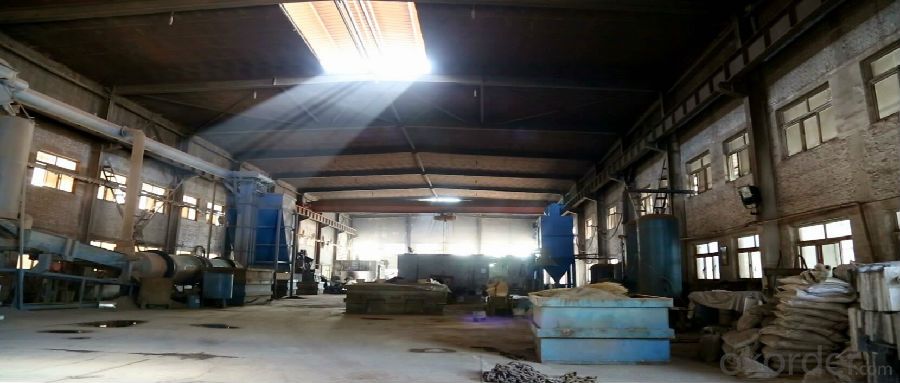
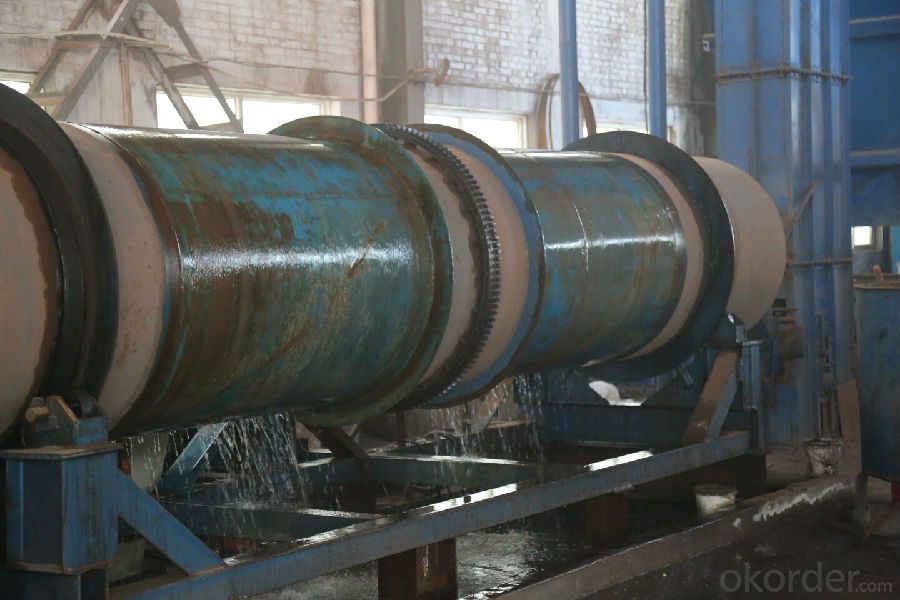

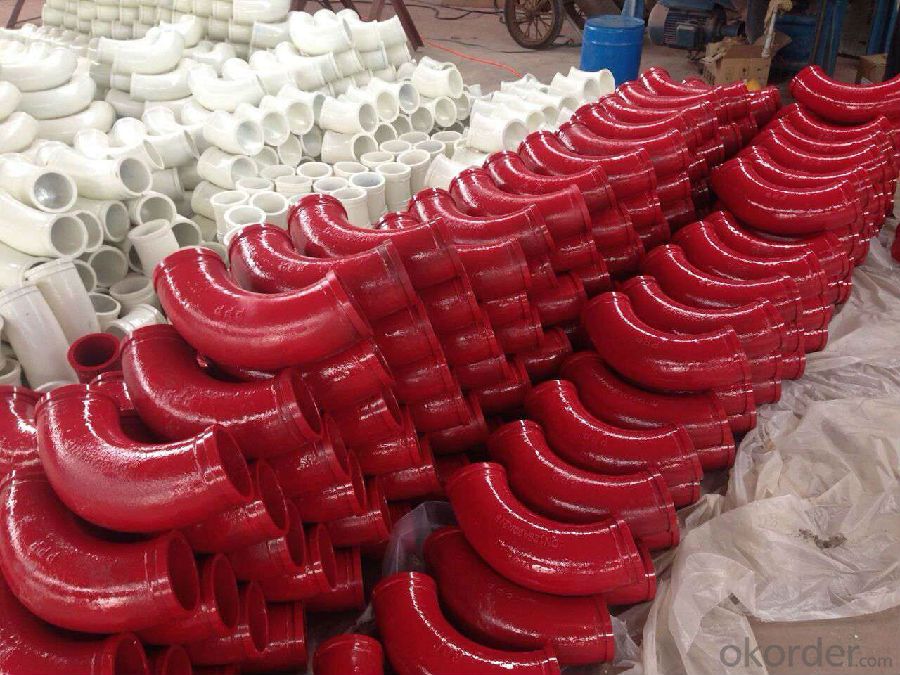
- Q:What are the different types of concrete pump hopper cylinders seals?
- Concrete pump hopper cylinder seals come in various types, each catering to specific needs and requirements. The most commonly used types are as follows: 1. Piston seals: These seals prevent leakage between the piston and cylinder bore. They are typically crafted from durable materials like rubber or polyurethane, ensuring resistance to wear and tear. 2. Rod seals: Installed on the piston rod, rod seals prevent leakage between the rod and cylinder head. They are commonly made of rubber or fabric-reinforced rubber, delivering reliable sealing even in high-pressure conditions. 3. Wiper seals: These seals are utilized to remove dirt, dust, and other contaminants from the retracting piston rod. They are usually composed of polyurethane or rubber, effectively sealing and protecting the cylinder. 4. Wear rings: Employed to decrease friction and prevent metal-to-metal contact between the piston and cylinder bore, wear rings are usually made of materials like bronze or Teflon. They significantly extend the cylinder's lifespan by reducing wear and tear. 5. Backup rings: These rings provide additional support and stability when used alongside other seals. Typically crafted from materials like rubber or PTFE, backup rings prevent extrusion and damage to the primary seal. In summary, the choice of the appropriate concrete pump hopper cylinder seal relies on factors such as the specific application, operating conditions, and desired performance characteristics. It is crucial to select seals that are compatible with the material being pumped, offer effective sealing, and have a long lifespan to ensure optimal performance and minimize maintenance needs.
- Q:What are the elements of concrete pump and concrete pump truck selection?
- The performance of the random type varies depending on the type and structure of concrete pump truck building, in addition to considering the choice of models into the concrete pouring amount, should also consider the building type and structure, technical requirements, construction site conditions and environment etc.. The main performance parameters of the concrete pump vehicle should be in line with the construction requirements or slightly larger. If the capacity is too large, the utilization rate is low, too small, not only can not meet the requirements, but also will accelerate the loss of the concrete pump truck.
- Q:Can I get spare parts for both concrete pumps with and without water tanks?
- Yes, you can get spare parts for both concrete pumps with and without water tanks.
- Q:How does a concrete pump S valve function?
- A concrete pump S valve functions by controlling the flow of concrete from the hopper to the delivery pipeline. It consists of two flat plates attached to a shaft that can rotate. When the S valve is in the closed position, the plates are pressed together to prevent the concrete from flowing through. As the shaft rotates, the plates separate, allowing the concrete to pass through and be pumped to the desired location. This mechanism ensures efficient and precise control of concrete flow during pumping operations.
- Q:How often should hopper grate pin retainers be inspected or replaced in a concrete pump?
- Hopper grate pin retainers in a concrete pump should be inspected regularly, ideally before each use, to ensure proper functioning and prevent any potential issues. If any signs of wear, damage, or looseness are detected, the retainers should be replaced immediately to maintain the efficiency and safety of the concrete pump operation.
- Q:What are the potential risks of using non-standard or modified hydraulic components in concrete pump spare parts?
- There are several potential risks associated with using non-standard or modified hydraulic components in concrete pump spare parts. Firstly, these components may not have undergone the same rigorous testing and quality control as the original equipment manufacturer (OEM) parts. As a result, their performance and durability may be compromised, which can lead to potential failures or malfunctions. This, in turn, can cause accidents, injuries, or damage to the equipment or surrounding structures. Secondly, the use of non-standard or modified components may void the warranty of the concrete pump and its spare parts. Typically, manufacturers offer warranties to ensure the reliability and safety of their products. However, by using non-standard components, the warranty may become null and void. Consequently, the user will be responsible for any repairs or replacements needed due to issues arising from these non-standard parts. Another risk is the potential compatibility issues that may arise when using non-standard or modified components. Hydraulic systems rely on precise engineering and compatibility between various components to function optimally. Non-standard or modified parts may not fit properly or may have different specifications, resulting in leaks, pressure imbalances, or reduced overall performance. Furthermore, the use of non-standard or modified components can impact the overall efficiency and productivity of the concrete pump. OEM parts are specifically designed to work seamlessly with the rest of the system, ensuring smooth operation and maximum output. However, by using non-standard parts, the performance of the pump may be compromised, leading to increased downtime, decreased productivity, and higher maintenance costs. Lastly, the use of non-standard or modified components can also have legal and regulatory implications. Certain jurisdictions may have regulations or standards in place that require the use of OEM or certified parts for specific equipment, including concrete pumps. Failure to comply with these regulations can result in fines, penalties, or legal liabilities in the event of accidents or failures. In conclusion, the potential risks associated with using non-standard or modified hydraulic components in concrete pump spare parts include compromised performance and durability, warranty voidance, compatibility issues, reduced efficiency, and legal and regulatory implications. It is always advisable to use OEM or certified spare parts to ensure the safety, reliability, and optimal performance of the equipment.
- Q:What are the signs of a damaged concrete pump agitator motor?
- Indicators of a damaged concrete pump agitator motor include various signs: 1. Unusual noises: The presence of excessive grinding, rattling, or squeaking noises emanating from the agitator motor may suggest damage. These noises could possibly indicate the need for attention to worn-out bearings or other internal components. 2. Inconsistent operation: If irregular or inconsistent mixing of the concrete occurs, it could be a sign of a damaged agitator motor. Whether the concrete is not being mixed properly or the agitation speed is inconsistent, it is possible that the motor is damaged. 3. Overheating: To identify a problem, the agitator motor becoming excessively hot during operation may serve as a clue. Overheating can be the result of various issues, such as a faulty motor or insufficient lubrication. In such cases, it is crucial to promptly address the issue to prevent further damage and potential breakdown. 4. Vibrations: The occurrence of excessive vibrations during operation could indicate a damaged motor. Vibrations may arise from imbalanced or misaligned components within the motor, leading to reduced efficiency and increased wear and tear. 5. Electrical issues: If the motor experiences electrical problems, such as tripping circuit breakers or blowing fuses, it might suggest a damaged motor. These issues can result from faulty wiring, short circuits, or damaged electrical components, requiring the attention of a professional. 6. Reduced performance: A damaged agitator motor can cause reduced performance or decreased efficiency. If the agitator is not working as effectively as before, or if the concrete is not being mixed thoroughly, it could be a sign of motor damage. In case of suspicion regarding the damage of the concrete pump agitator motor, it is advisable to seek assistance from a professional technician or service provider with expertise in concrete pump machinery. They can accurately diagnose the issue and provide suitable solutions for repairing or replacing the damaged motor.
- Q:Are there any online resources or manuals available for concrete pump spare parts?
- Indeed, the online realm offers a plethora of resources and manuals for concrete pump spare parts. Numerous manufacturers and suppliers of such components have established their own websites, which furnish comprehensive details concerning their products, encompassing manuals, catalogs, and technical specifications. It is worth noting that these websites often dedicate sections or pages specifically for spare parts, facilitating the acquisition of information pertaining to diverse types of spare parts, their compatibility with various pump models, and the process of ordering them. In addition to the aforementioned manufacturer websites, there exists a profusion of online marketplaces and directories that specialize in construction equipment and spare parts. These platforms empower users to conduct targeted searches for concrete pump spare parts, enabling the comparison of prices and specifications provided by different suppliers. Furthermore, some of these platforms offer supplementary resources, including user reviews, ratings, and guides to assist in selecting the appropriate spare parts for a given pump model. Moreover, online forums and communities cater to professionals in the construction industry, furnishing platforms for the exchange of information and discussions concerning concrete pumps and their spare parts. These forums serve as invaluable resources for obtaining recommendations, resolving common issues, and connecting with experts capable of offering guidance on sourcing and maintaining spare parts for concrete pumps. Overall, regardless of whether one is a concrete pump operator, maintenance technician, or an individual seeking spare parts for a concrete pump, the online domain abounds with resources that can provide the necessary information and manuals.
- Q:What are the key considerations when purchasing spare parts for a concrete pump?
- When purchasing spare parts for a concrete pump, the key considerations include ensuring compatibility with the specific make and model of the pump, quality and durability of the parts, availability and delivery time, cost-effectiveness, and the reputation and reliability of the supplier.
- Q:What is the purpose of a concrete pump carbide wear plate?
- A concrete pump carbide wear plate serves the purpose of facilitating the transfer of concrete from the hopper to the desired location by providing a resilient and long-lasting surface. Concrete pumps utilize a piston system to propel the concrete through the pump and into the delivery line. Throughout this process, the wear plate acts as a safeguard against the abrasive nature of the concrete. Concrete comprises various components such as sand, gravel, cement, and water. When forced through the pump, the concrete's abrasive particles can inflict substantial damage on the pump's internal elements, leading to reduced efficiency and increased maintenance expenses. The carbide wear plate is specifically engineered to endure the elevated pressures and abrasive forces encountered during the concrete pumping procedure. Constructed from a robust and durable material known as carbide, this wear plate supplies a resilient surface that minimizes wear and tear on the pump's internal parts. By incorporating a concrete pump carbide wear plate, contractors and construction experts can ensure the efficient and effective operation of their concrete pumps, with minimal interruptions for repairs. This not only saves time and money but also guarantees that the concrete is transported smoothly and consistently to the desired location, resulting in high-quality construction projects.
1. Manufacturer Overview |
|
|---|---|
| Location | |
| Year Established | |
| Annual Output Value | |
| Main Markets | |
| Company Certifications | |
2. Manufacturer Certificates |
|
|---|---|
| a) Certification Name | |
| Range | |
| Reference | |
| Validity Period | |
3. Manufacturer Capability |
|
|---|---|
| a)Trade Capacity | |
| Nearest Port | |
| Export Percentage | |
| No.of Employees in Trade Department | |
| Language Spoken: | |
| b)Factory Information | |
| Factory Size: | |
| No. of Production Lines | |
| Contract Manufacturing | |
| Product Price Range | |
Send your message to us
CONCRETE DELIVERY ELBOW PM TYPE 45DEG R275 DN125
- Loading Port:
- Tianjin
- Payment Terms:
- TT OR LC
- Min Order Qty:
- 100 pc
- Supply Capability:
- 10000 pc/month
OKorder Service Pledge
OKorder Financial Service
Similar products
New products
Hot products
Related keywords

